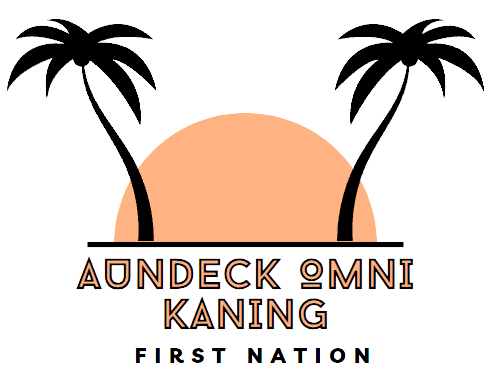A Beginner’s Guide to Anishinaabe Language & Culture on Manitoulin Island
Manitoulin Island, floating in the clear waters of Lake Huron, isn’t just the world’s largest freshwater island — it’s a cultural treasure. It’s home to the Anishinaabe people, whose traditions, language, and stories continue to shape life on the island in powerful and beautiful ways.
Whether you’re a curious traveler, a student of Indigenous culture, or someone reconnecting with their roots, this guide offers a warm introduction to the Anishinaabe language and way of life — and how you can respectfully engage during your time on Manitoulin.
Who Are the Anishinaabe?
The term Anishinaabe (pronounced Ah-nish-ih-NAH-bay) refers to a group of Indigenous peoples that includes the Ojibwe, Odawa, and Potawatomi. Many Anishinaabe families have lived on and around Manitoulin Island for generations.
The word itself is often translated as “original people” or “good humans,” reflecting their deep spiritual and familial ties to the land, to each other, and to the Creator.
Speaking the Language: Anishinaabemowin
The Anishinaabe language, known as Anishinaabemowin, is still spoken across parts of Ontario, Quebec, and the northern U.S. On Manitoulin Island, efforts to preserve and revitalize the language are thriving.
Here are a few common phrases that can help you connect:
| English | Anishinaabemowin | Pronunciation |
|---|---|---|
| Hello | Boozhoo | BOH-zhoo |
| Thank you | Miigwech | MEE-gwetch |
| How are you? | Aaniin ezhi-ayaayan? | AH-neen eh-zhee ah-yah-yan |
| I’m good | Nimino-ayaa | Nih-MIN-oh ah-yah |
| My name is… | (Name) nindizhinikaaz | nin-dih-zhin-ih-KAAZ |
Learning just a few words shows respect and helps keep this beautiful language alive.
Core Values: The Seven Grandfather Teachings
At the heart of Anishinaabe culture are The Seven Grandfather Teachings — timeless lessons passed down through generations:
- Wisdom (Nibwaakaawin)
- Love (Zaagi’idiwin)
- Respect (Manaaji’idiwin)
- Bravery (Aakode’ewin)
- Honesty (Gwayakwaadiziwin)
- Humility (Dabaadendiziwin)
- Truth (Debwewin)
These teachings aren’t just philosophical — they guide everyday actions, relationships, and how people care for the land and each other.
How to Experience Anishinaabe Culture on Manitoulin
There are many opportunities for respectful and meaningful cultural engagement on the island:
- Powwows – Traditional gatherings filled with drumming, dance, and vibrant regalia
- Language Classes – Beginner workshops and immersive programs offered by some communities
- Storytelling Circles – Hear traditional legends, like those of Nanabush and the creation of the island
- Craft Workshops – Make moccasins, beadwork, or birchbark baskets with local artisans
- Feasts & Ceremonies – Celebrate the seasons and honor Indigenous traditions
Communities to Visit
| Community | Language Learning | Cultural Activities | Visitor Access |
|---|---|---|---|
| Aundeck Omni Kaning | Yes | Powwows, craft workshops | Yes |
| M’Chigeeng First Nation | Yes | Cultural centre, art gallery | Yes |
| Sheshegwaning First Nation | Limited | Canoeing, feasts | Yes |
| Wikwemikong Unceded | Yes (Immersion) | Tours, theatre, community events | Yes |
Each First Nation has its own events, traditions, and schedules — so be sure to check ahead and always follow local customs.
Why Learning Matters
Embracing Anishinaabe language and culture isn’t just informative — it’s transformative.
- Builds bridges between cultures
- Supports Indigenous-led revitalization efforts
- Encourages respectful tourism
- Deepens your connection to the land and people
- Helps preserve a language at risk of being lost
Traditional vs Modern Learning
| Aspect | Traditional Learning | Modern Tools |
|---|---|---|
| Method | Oral teachings, song, ceremony | Online classes, mobile apps |
| Teachers | Elders and family members | Language instructors, cultural educators |
| Setting | Nature, homes, sacred spaces | Schools, Zoom, podcasts |
| Learning Pace | Seasonal and relational | Structured and self-paced |
| Spiritual Element | Strong | Depends on the program |
Both styles complement each other — learning through lived experience and digital access.
FAQ: Learning Anishinaabe Language & Culture
Q: Can non-Indigenous people learn Anishinaabemowin?
A: Yes — and doing so respectfully can be a meaningful act of support for language revitalization.
Q: Do I need permission to attend cultural events?
A: Public events like powwows are open to all. For private ceremonies or workshops, always ask first.
Q: Are there tools or apps for language learning?
A: Yes! Try Ojibwe.net, FirstVoices, or Anishinaabemdaa.
Q: When is the best time to visit?
A: Summer, especially June to September, is ideal for powwows, festivals, and open workshops.
Q: Can I take a workshop while visiting?
A: Yes, some communities offer classes for visitors. Contact local cultural centers for schedules.
Final Thoughts
The Anishinaabe language and way of life are alive and well on Manitoulin Island. Every phrase you learn and every story you hear brings you one step closer to understanding a worldview built on respect, balance, and connection.
Boozhoo for beginning this journey, and Miigwech for your curiosity. If you visit, come with an open heart and mind — the land, and the people who care for it, have much to teach.
